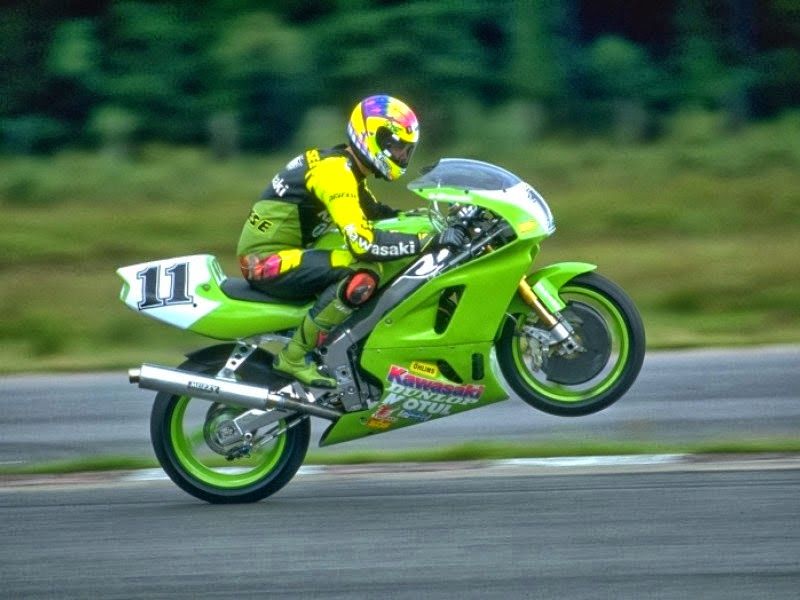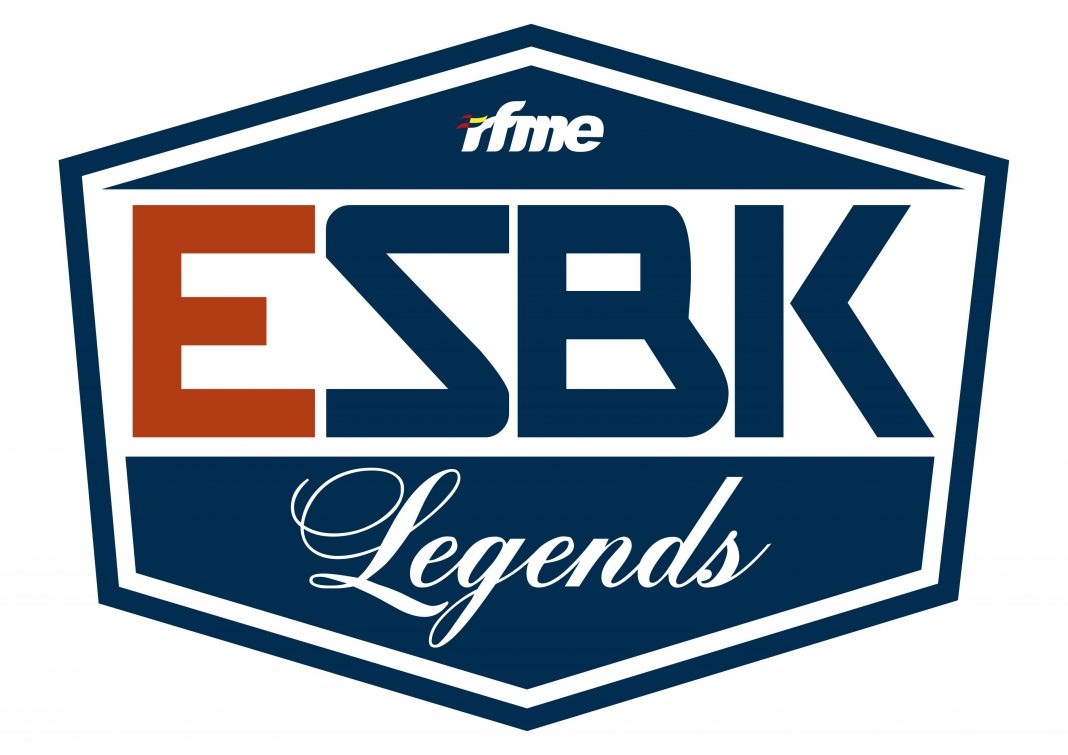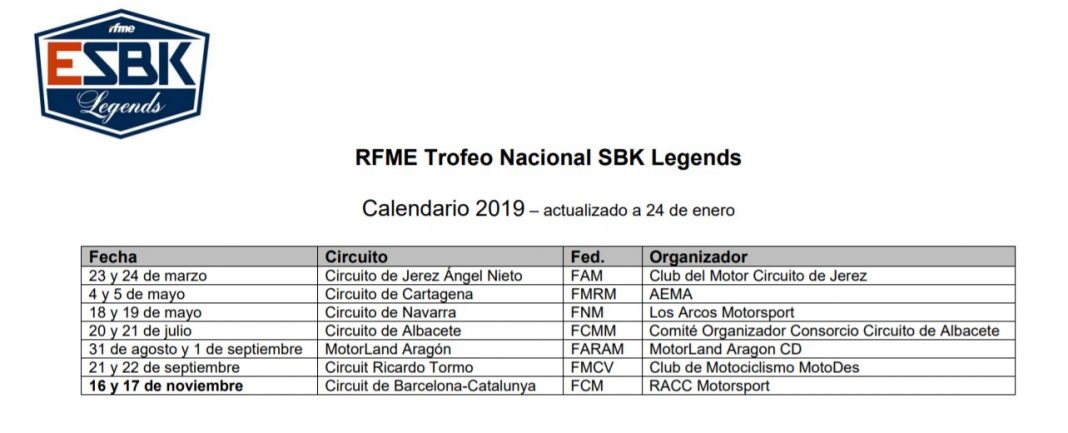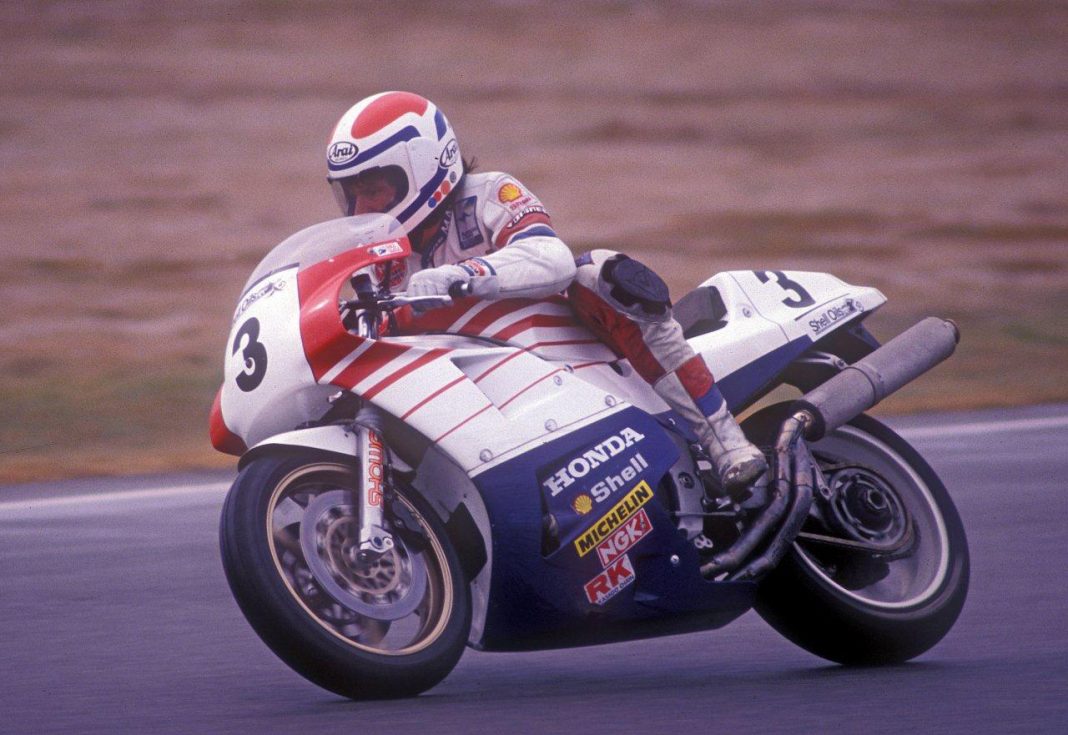http://www.trademotorcycles.com.au/honda-cbx750-tt-review-retro-racer/
There have been many milestones in motorcycle history, but there was one key development we often take for granted – that of liquid cooling for engines.
On streetbikes this was partly for noise reasons but on racers it was all down to chasing extra horsepower, and by the early ’80s either water cooling or oil cooling had become the norm for performance motorcycles.
Air-cooled bikes had already disappeared from the GP arena with the demise of the MV Agusta fours at the end of 1976, thanks largely to noise concerns. By then, all the two-strokes which came to usurp the supremacy of the Italian bikes were water-cooled, and in the following decade that trend spread to the new generation of large-capacity four-stroke racers based on volume production streetbikes – first the TT Formula 1 category featuring production engines mounted in racing chassis, then today’s Superbikes.
Despite its reputation for pushing the engineering envelope, the last air-cooled four-cylinder bike to be produced by any major manufacturer was a Honda – the air-cooled, 16-valve, DOHC CBX750 in-line four, known internally within Honda as the RC17. It would go on to have a very short shelf life, manufactured from 1984 to 1988.
The ultimate evolution of the legendary CB750, it was marketed primarily in Europe, South America and Australia, but was sold elsewhere as a police bike.
It’s widely accepted that the CBX750 was a stop-gap model that Honda produced in a relative hurry, in order to fill the gap between the unreliable VF750F of 1982 and the VFR750 (the RC24), which replaced it in 1986. Of course, as customers learned of the VFR750’s vast superiority to its VF750 predecessor, its sales took off, leaving the CBX in limbo.
However, Honda had already spent a considerable sum on bringing the CBX to market, and so it thought it better get some mileage out of it, and the promotion of the model that followed also involved racing it. Not by the factory HRC race operation, though – it already had its hands full with a variety of world championships – but with a local tuning house by the name of Moriwaki Engineering.
LOCAL TALENT
Mamoru Moriwaki had founded his company in Suzuka in 1973, before which he’d worked for Pops Yoshimura, whose eldest daughter, Namiko, he’d married. Like his father-in-law, Mamoru started out developing tuning parts for the new Kawasaki Z1 superbike, and then when Pops moved to LA and switched allegiance to Suzuki for 1978, it left Moriwaki as the top Japanese Kawasaki tuner.
First Graeme Crosby then Wayne Gardner brought Moriwaki Kawasakis to global prominence by their exploits with such bikes in Europe in the 1979-81 period, before the foundation of HRCin 1982 left the door open for a closer collaboration with Honda, which Mamoru-san gratefully accepted. One of his first collaborative projects was the creation of a TT F1 race version of the CBX750 in 1984, to relieve HRC of the burden of developing a race version of a bike which its corporate masters had dictated should be raced in order to generate interest in the model, but which didn’t fit into HRC’s game plan.
The alloy-framed twin-shock Moriwaki Honda CBX750TT1 RC17 racer was the result, a prime example of original thought which, but for two crashes by team rider Shunji Yatsushiro while well placed in crucial rounds, would have won the 1985 Japanese TTFl title convincingly. In doing so, he’d have beaten all the new factory RVF750 Honda V4s, plus the Yamaha Genesis and Yoshimura Suzuki teams – the latter racing the new oil-cooled GSX-R750.
As it was, Yatsushiro still came third in the 1985 series on his way to an NSR500 ride for him in GP racing the following season. In July that same year Aussie future 500GP ace Kevin Magee came to Japan for the first time to ride in the Suzuka 8-hour race on a Moriwaki CBX750 with established Superbike star Rob Phillis, but in the second qualifying session Magee highsided on some oil and broke his scaphoid. He went on to race despite the injury, he and Phillis crossing the line in ninth place!
Yatsushiro’s less-experienced colleague Hikaru Miyagi took over riding the Moriwaki CBX in 1986 after finishing sixth in the ’85 series on the team’s back-up bike, and repeated the championship position that year, all on a bike using allegedly outmoded twin-shock rear suspension and a supposedly uncompetitive engine. Yet it was impressive how well the Moriwaki CBX750 performed at Suzuka with its two long straights, quite apart from its remarkable reliability, which saw both team bikes finish practically every race they ever started, rider error excepted – such as guest rider Phillis’s first-lap retirement in the TT F1 international at Suzuka in November 1986 due to a fried clutch, a sad ending to the CBX750’s last-ever appearance at the top level of racing.
DIFFERENT STROKES
Having followed the Moriwaki CBX’s progress from afar with increasing interest over the previous two years, I was honoured to become the first person outside the team to ride the bike at Suzuka a week before Phillis’s short-lived re-acquaintance with it there. One look at the twin-shock rear end of the Moriwaki CBX was enough to tell you that its creator wasn’t one to be swayed by fashion, but even so the choice of Honda’s vastly underrated air-cooled 16-valve in-line UJM four to power a GSX-R/FZR/VFR challenger was, err, ‘idiosyncratic’. Never mind that the main reason for the street version’s less-than-brilliant sales figures was Honda’s own marked lack of enthusiasm in promoting it, doubtless for fear of diverting attention and sales from its water-cooled V4s.
The irony was that what turned out to be the last-ever air-cooled Japanese in-line four ever made was also arguably the best ever: it had taken Mamoru Moriwaki to make lemonade out of the lemon. To any nostalgic admirer of the good old days of meaty, mighty, air-cooled in-line fours from the early days of Superbike racing just a decade earlier, the CBX750TT1 seemed like a smaller-scale version of those spectacular bikes of yesteryear. The clean-looking, compact in-line four-cylinder engine was slotted into a simple but beautifully-constructed double-cradle chassis made from small-section extruded aluminium tubing previously seen only on Yoshimura Suzukis, with longitudinal ribbing for additional strength and rigidity. Oh, and with twin rear shocks. It was light (156kg with oil, but no fuel), compact, and uncluttered.
However, once I started questioning Moriwaki-san about his bike, I discovered that his reason for selecting the CBX750 power unit was even more pragmatic than I’d thought. Moriwaki Engineering’s then strengthening link with HRC enabled Honda’s racing division to pass over race development of the CBX engine to it, so that the blue and yellow Moriwaki CBX750TT1 was effectively a privateer bike with a factory engine. Like I said, even Honda has a back door to its HRC race shop! What’s more, without apparently advertising the fact anywhere outside of Japan, HRC had developed a series of race kits for the bike under the CBX750RK designation, ready for purchase by anyone wanting to follow in Moriwaki’s free-thinking, fashion-bucking footsteps.
These incorporated extensive engine modifications, including a set of forged two-ring pistons which with Moriwaki/HRC cylinder head work delivered a 12.5:1 compression ratio (stock was 9.3:1). The standard crankshaft was retained, polished but otherwise unmodified, fitted with steel racing conrods, though titanium ones were tried at first before being rejected on reliability grounds. For the same reason, the 0.5mm oversize valves (four per cylinder, remember) became steel after originally being titanium, because these had to be changed every 1000km, an expensive luxury. The twin overhead camshafts were HRC race kit components, ditto the valve springs, but the stock cam chain was retained. Finally, a beefed-up version of the standard oil-bath clutch was mated to a special HRC six-speed close-ratio gearbox, and the result fitted with a special four-into-one Moriwaki exhaust with larger-diameter headers compared to stock pipes aimed at producing more top-end power, at the cost of low and midrange grunt.
The result of all this was an increase in horsepower from 70.6kW (96hp) at 9800rpm at the crank in standard street form, to 86.8kW (118hp) at 10,500rpm at the countershaft sprocket on the racer, with the engine safe to 11,500rpm. But power tailed off above 11,000rpm, so there was no inducement to over-rev it unduly. Still, assuming the Moriwaki dyno wasn’t hopelessly over-optimistic, this was quite a remarkable output in the 1980s for any 750cc road-based four-stroke engine, let alone an air-cooled one. Compare that with the 78kW (106hp) shown in 1984 on the Heron Suzuki dyno by its air-cooled Yoshimura-developed GSX750R power units, or the 75.6kW (103hp) of the Kawasaki GPz750TT1 motor fitted to P&M frames for the British F1 series.
Okay, it was still 10 per cent down on power compared to HRC’s own V4 RVF750, but that’s no disgrace. More to the point, using the results of the Heron dyno once again (79.4kW/108hp for its less-than-reliable first-generation oil-cooled GSX-R750TT1 race engines in 1985/86) and Yatsushiro’s results in the Japanese F1 series as a guide, the humble air-cooled CBX750 unit was more than able to hold its own against anything else – including the water-cooled FZ750 Yamaha.
POWER DISPARITY
The superiority of Honda’s V4 RVF in terms of power over the CBX was well illustrated when I rode Joey Dunlop’s 1986 title-winning V4 that morning at my Suzuka test day, and was passed by the Moriwaki test rider on the CBX just before the back straight – my excuse was that he’d had a lot more practice getting the tricky Spoon Curve right leading onto it! But the way ‘my’ factory bike’s water-cooled V4 motor ate up the air-cooled semi-works one in a straight line after that showed just why it was the king of the Superbikes, allowing me to pass him back before the high-speed 120R turn.
However, when I came to ride the Moriwaki in the afternoon, I found its engine performance still pretty impressive in terms of the rest of the opposition: it was just that the RVF made almost anything comparable look pretty mediocre back then, especially via the rideability provided by its smooth power delivery and ultra-flat torque curve. The air-cooled CBX on the other hand was much peakier, and whereas the V4 pulled from practically zero revs, the in-line motor just spluttered and banged down low without very much happening below 7000rpm – then it chimed in big time. Still, there was noticeably less power at 8000rpm than at 10,000rpm, so with maximum power on tap at 10,500rpm you had to work the race-pattern gearbox hard to get maximum benefit from the HRC engine mods and that Moriwaki exhaust.
The ratios of the six-speed cluster were well chosen – with an average 1200rpm drop between gears they made the engine seem a lot less fussy than the similar ultra-close ratio gearbox on the TTF1 Suzuki GSX-R, where you’d be forever changing gear in spite of having an extra 2000rpm to play with compared to the CBX. The air-cooled Honda did have a narrow gap between fifth and top gear – just 700rpm – but this, according to Moriwaki, was to keep the engine pulling peak revs at places like the uphill finishing straight at Sugo, where it acted as a kind of overdrive. In general, you really had to keep it spinning in the upper 2500rpm band for maximum performance.
It took me a while to adjust to this mentally after riding the RVF that morning, because you absolutely couldn’t just let the CBX slog out of corners at low revs like you could with the V4, not only because of the engine characteristics, but also because of how it affected the handling. Initially, I was surprised to find the Moriwaki chassis tended to wash out the front end, especially on the winding uphill twists and turns behind the Suzuka pits leading to the Degner Curve, where there was significant understeer when getting on and off the gas.
CHARGE HARDER
Crouching flat on the tank in the bends in an effort to shift as much of my body weight over the front wheel as possible did help in this respect, but not as much as when I started using more revs, and a lower gear. The steering immediately improved, indicating that this was a bike which demanded to be taken through corners on the power, though the 1420mm wheelbase was quite normal then for a big four-stroke, and the non-adjustable 25-degree head angle was unremarkable for the day. I was surprised, though, to discover that the weight distribution was as much as 55/45 per cent biased to the front, more by accident than design since Moriwaki-san told me that in designing a frame, he placed more importance on a low centre of gravity than a front-heavy weight distribution. What this meant, however, was that when you did start taking corners hard on the throttle, the front end stayed glued to the road and the steering became nicely neutral.
Now let’s turn our attention to that twin-shock rear. In donning his chassis-designer cap, Mamoru Moriwaki told me he was unconvinced of the benefits of monoshock rear suspension, convinced he could obtain equivalent or superior compliance with twin shock units at the back offering greater overall torsional rigidity. If lengthened, these could yield the same degree of wheel movement, and thus offer as soft and compliant ride, leading to enhanced compliance and grip.
Kayaba was an enthusiastic partner in this experiment, and it made the special twin rear units fitted to the CBX. Gas-damped with remote cylinders, these were fitted with multi-rate springs that Moriwaki believed would offer the same kind of progressive-rate variation as a monoshock operated by a rising rate link – but without any potential for wind-up, and consequent overworking of the single shock. The Showa shocks on the CBX employed steel extensions that actually passed through the box section of the swingarm on each side of the wheel, and pivoted on brackets attached to the underside of each leg of the well-braced fabricated aluminium swingarm. This allowed that to be wide enough to accommodate the 3.85/6.50 x 18in rear tyre, yet gave the necessary lateral rigidity too, and allowed the long Kayabas to be mounted in a desirable fashion.
Thing is, you wouldn’t realise you’re on a twin-shock motorcycle if you didn’t already know the CBX wasn’t a monoshocker. The rear end was actually less stiffly sprung than almost any 250GP racer I’d ridden, giving a compliant, reassuring ride which ate up all the ripples and bumps which then abounded on the Suzuka surface. Suspension response was good enough to be unremarkable – the CBX’s front end actually coped well with the track’s imperfections, perhaps because Moriwaki had managed to acquire a set of the outstanding 41.3mm Showa forks fitted to the works V4 Hondas. This front end came complete with TRAC brake-operated anti-dive, though it still dipped quite a bit under brakes.
CONFIDENCE BOOST
Once you got used to its preference for being taken through corners with the power hard on, the Moriwaki chassis performed with total confidence. Moreover, not only did its alloy construction and various weight-saving touches result in a bike scaling 7kg less than the equivalent air-cooled, steel-framed Kawasaki-powered Harris or P&M TTF1 racers, but the overall effect was to make this 750cc four-stroke four-cylinder seem like a 500GP two-stroke in terms of the speed of steering response, and the ease with which it changed direction.
It felt like it was a lot lighter and smaller than it really was – delicate, almost, which is scarcely a term I’ve ever got used to applying to big, in-line fours! But the CBX750 engine was so narrow (especially because the alternator was placed behind the engine, here removed and blanked off in TT1 form) that it conveyed this impression, as well as reducing the frontal aspect.
In fact, the CBX750 had so much going for it in TT1 form, that the obvious question remained to be asked: why did nobody else ever race one seriously outside Japan? Part of the reason was the herd instinct, for although they like to pretend otherwise, road racers are slaves to fashion, and by then air-cooled race bikes were strictly for the history books – or the pages of this magazine. But the main reason was Honda’s own lack of enthusiasm for what was very definitely a short-lived interim model, which in turn seemingly led to a reluctance by HRC to promote the fact it actually did have a race kit available for it.
I’m bound to say I reckon a kitted CBX750 would have been a much more practical proposition for a private team than the hard-to-work-on V4 Honda – as several teams found out the hard way during the next decade, especially with the RC45. It would have proved at least as good a bet as the Suzuki and Yamaha fours with the added benefits of reliability thanks to its greater accessibility, born of simplicity. In fact, on the basis of my test I’d say a CBX750 equipped with HRC/Moriwaki tuning parts would have made a pretty competitive and cost-effective privateer bike for the debut World Superbike series which kicked off in 1988 – and was of course won by Fred Merkel on the semi-works Team Rumi Honda RC30. Too bad nobody ever tried to prove me right or wrong about that!
SPEX
Honda CBX750 TT
ENGINE
Type: Air-cooled, DOHC, four-valves-per-cylinder, four-stroke, in-line four-cylinder
Capacity: 747cc
Bore x stroke: 67mm x 53mm
Compression ratio: 12.5:1
Fuel system: 4 x 33mm Keihin CR carburettors
TRANSMISSION
Type: Six-speed HRC, close-ratio
Final drive: Chain
CHASSIS AND RUNNING GEAR
Frame type: Twin-loop full duplex cradle in extruded square-section aluminium tubing
Front suspension: 41mm Showa telescopic fork with TRAC brake-operated anti-dive system
Rear suspension: Twin shocks
Front brake: Twin 320mm discs with Brembo four-piston calipers
Rear brake: 200mm disc with Lockheed twin-piston caliper
DIMENSIONS AND CAPACITIES
Weight: 156kg (with oil, no fuel)
Wheelbase: 1420mm
Seat height: N/A
Fuel capacity: N/A
PERFORMANCE
Max power: 86.8kW (118hp) at 10,500rpm
Max torque: N/A
Top speed: 268km/h
OTHER STUFF
Year of manufacture: 1984
Owner: Moriwaki Engineering, Suzuka, Japan





